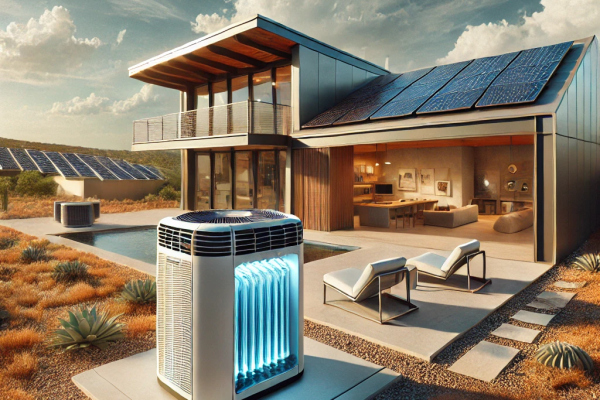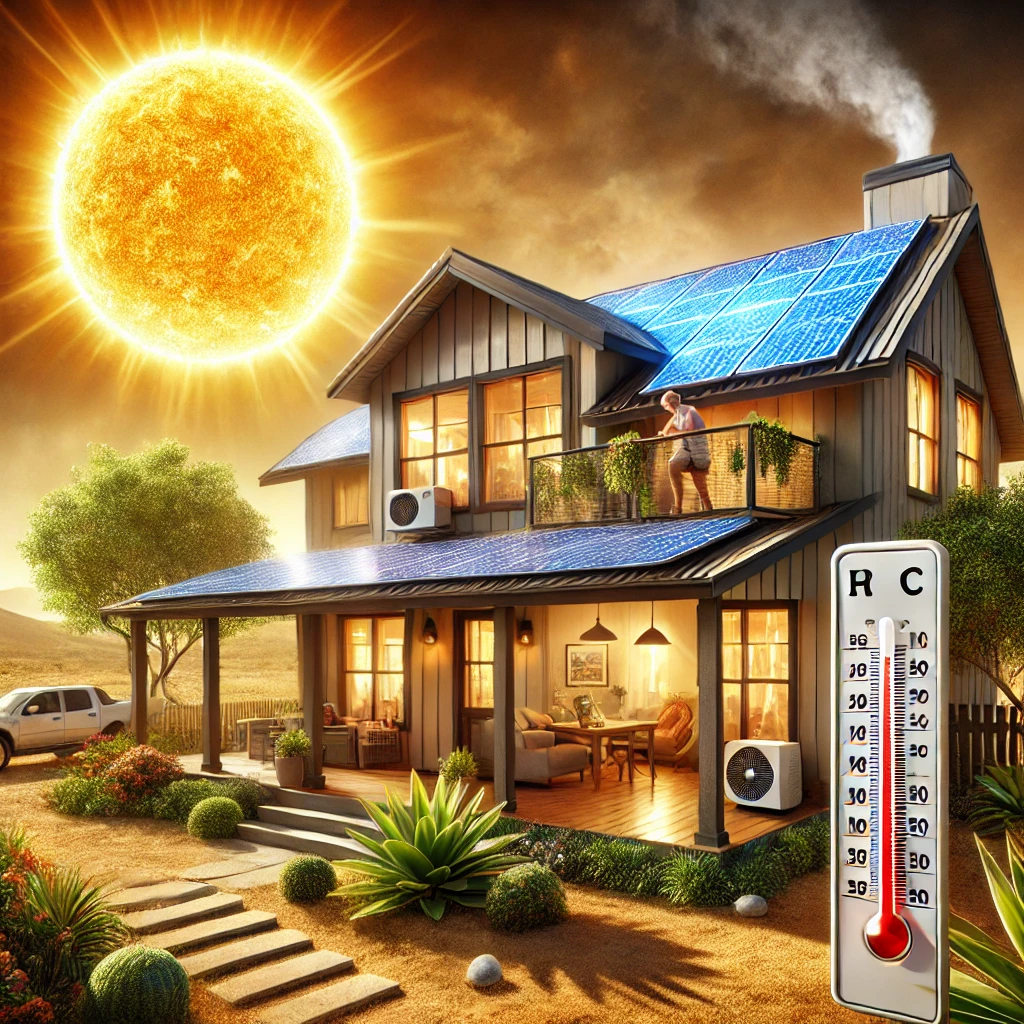
The Future of Cooling: New Technologies That Will Revolutionize Climate Control
Texas Heat: The Growing Need for Efficient Cooling
Summers in Texas are getting hotter. Last July broke temperature records, with extreme heat spreading even to regions that previously experienced milder summers. In the U.S., high temperatures kill more people annually than hurricanes, tornadoes, and floods combined. Air conditioners have long been a lifesaver, but they come with a significant downside: they contribute to climate change. The hotter it gets outside, the more people turn on their ACs, which leads to increased energy consumption and higher greenhouse gas emissions. A vicious cycle.
Why Traditional Air Conditioning Is No Longer Enough
Most modern air conditioners operate on refrigerant compression technology, which cools the air but also releases potent greenhouse gases. Moreover, about 80% of AC-related emissions come not from refrigerants but from the energy required to power these systems. With rising temperatures and increasing demand for cooling, this model is becoming unsustainable.
According to the International Energy Agency (IEA), if current trends continue, global energy consumption for cooling will more than triple by 2050—exceeding the current annual energy consumption of the entire United States. Clearly, we need new solutions, especially in Texas, where summer temperatures frequently exceed 40°C, and energy grids face constant strain.
A Historical Perspective on Cooling Technologies
The concept of artificial cooling has existed for centuries. Ancient Egyptians used wet cloths and stone structures to keep homes cool. In India, water reservoirs and heat-absorbing walls helped create cooler environments. Modern air conditioning emerged in the early 20th century, thanks to Willis Carrier’s invention of mechanical cooling. However, since then, AC technology has remained largely unchanged.
Now, as climate change accelerates, the need for advanced cooling solutions has never been greater. The next generation of cooling must focus on efficiency, affordability, and sustainability.
New Technologies That Are Changing the Game
To break the vicious cycle of increased AC usage and rising emissions, scientists and engineers are developing innovative cooling systems that reduce environmental impact. Here are some of the most promising technologies:
1. Separating Cooling and Dehumidification Processes
Traditional air conditioners cool and dehumidify air simultaneously, but they do so inefficiently—overcooling the air just to remove moisture. New systems use absorbent materials (such as special salts or gel-based substances) to extract moisture before cooling. This prevents unnecessary overcooling and reduces energy consumption by up to 35%. Startups like Transaera are already testing such devices.
In hot and humid regions like coastal Texas, this technology could be revolutionary. Imagine a home where comfortable, cool air is maintained without overloading the electrical grid during peak summer hours. This innovation is particularly relevant for homes with large windows, where sunlight increases indoor temperatures.
Additionally, dehumidified air inherently feels cooler, meaning residents won’t need to lower temperatures excessively to feel comfortable.
2. Evaporative Cooling Systems
This method has been used for thousands of years. In ancient Iran, people built special clay structures—yakhchals—that allowed ice to be preserved even in the summer. Today, scientists are refining this technique for modern buildings, eliminating its primary drawback: high humidity. Harvard researchers, for example, have developed a system that uses a hydrophobic barrier to prevent moisture from entering the air while still utilizing the cooling effect of evaporation.
Evaporative cooling is particularly effective in arid Texas regions, where dry air can absorb moisture without significantly increasing humidity indoors. Additionally, these systems can be integrated with solar panels, making them even more cost-effective and environmentally friendly. This is especially important for remote areas in Texas, where power grids are often under strain.
3. Hybrid Systems with Liquid Sorbents
Florida-based company Blue Frontier is testing technology that combines dehumidification and evaporative cooling. Their system splits air into two streams: one undergoes direct evaporative cooling, while the other remains dry but still cools down. As a result, the AC operates without conventional refrigerants and consumes 50–90% less energy. This is crucial for Texas, where summer electricity bills can skyrocket.
This approach also helps balance energy demands. For example, these air conditioners can be charged at night when energy demand is lower and then used throughout the day. This reduces reliance on unstable power grids in areas prone to overloads.
The Economic Aspect of New Cooling Technologies
One major challenge remains the cost of implementing these new technologies. High-efficiency cooling systems are currently more expensive than traditional AC units. However, in the long term, they pay for themselves through reduced electricity bills. Some U.S. states already offer subsidy programs for homeowners who install energy-efficient cooling solutions. Expanding such initiatives could significantly accelerate the widespread adoption of these innovations.
What Can You Do Right Now?
Even if these cutting-edge technologies are still in development, there are practical steps you can take today to reduce your dependence on conventional air conditioning:
- Use passive cooling strategies: Install awnings, reflective window coatings, and plant trees around your home.
- Improve insulation: A well-insulated home retains cool air for longer, reducing the need for continuous AC usage.
- Choose energy-efficient AC models: Modern inverter-based air conditioners consume 30–40% less energy than traditional models.
- Utilize smart home systems: Automated blinds, thermostats, and ventilation systems can optimize indoor temperatures without excessive cooling.
- Incorporate solar energy: Solar panels installed on Texas rooftops can offset some cooling costs.
Conclusion
The future of cooling is already taking shape. The key is not just to wait for new technologies but to start implementing smart cooling solutions today. This is particularly important in Texas, where extreme heat places an increasing burden on homes and infrastructure. Every homeowner’s choices will determine how quickly we transition to more sustainable and cost-effective cooling methods.






